Bamboo! Love it or hate it (honestly, why would you?), your typicalbamboo plantis here to stay. So, you might as well grow it yourself. It’s not rocket science. Bamboo is one of the easiest plants to maintain and keep healthy. Just make sure to grow it in the right spot. Don’t want to catch any pandas (us included) munching on them!
Jokes aside, without a helping hand, yourbamboo plantmight not flourish as you wish. For this reason, we are here to give you our best advice on planting your own bamboo. We will help you grow a beautiful bamboo plant. You might want to share pics onBored Panda!
Table of ContentsPick the Right Variety of BambooPlant Your BambooWhere to Plant Bamboo?When to Plant Bamboo?How to Plant Bamboo?Bamboo Plant CareLightSoilWaterTemperature and HumidityFertilizerCommon Pest and DiseasesOverwinteringPropagating the PlantPruningPotting and RepottingCommon ProblemsLet Your Bamboo Reach the Sky (Not Literally)FAQHow Fast Does Bamboo Grow?Does Bamboo Clean the Air?What is the Downside of Bamboo Plants?
Pick the Right Variety of Bamboo
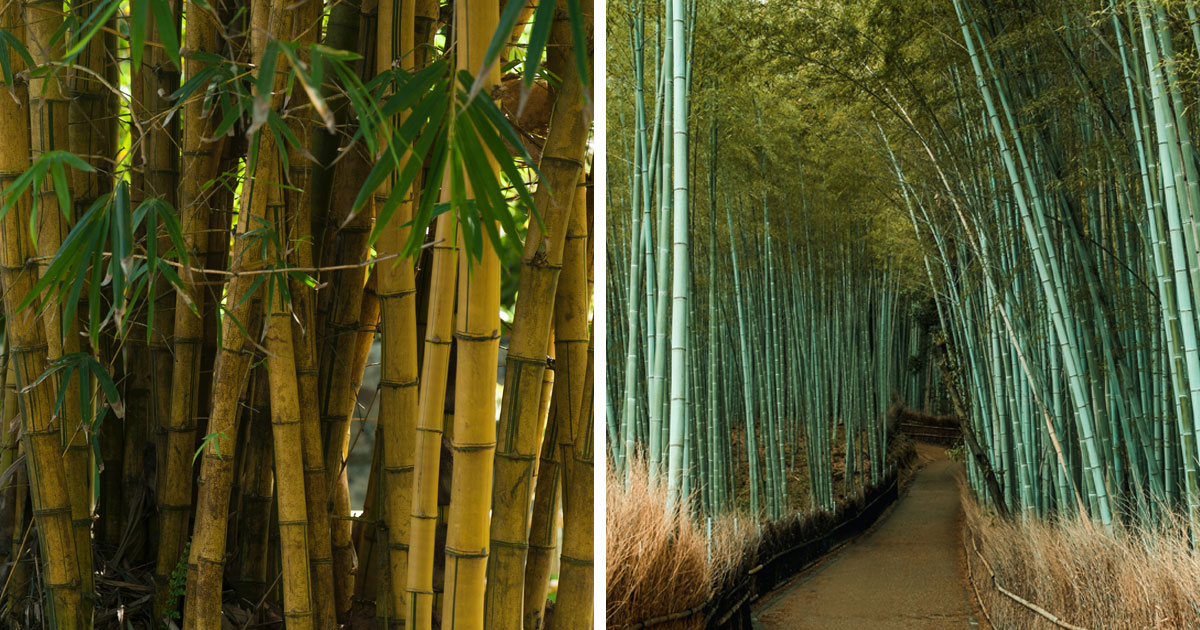
Image credits:Oleksandr PandAdam Dillon.
All bamboo can be divided into two categories — clumping and running. These categories are distinct and crucial for choosing the right bamboo for your specific planting needs, whether outdoor or indoor. The key difference between them lies in their root systems and growth patterns.
Like withdianthus flowers, there is more than just one variety of bamboo. If you aren’t planning to grow abamboo garden, stick with a single variety. However, each variety comes with its own benefits. So, before buying the seeds or saplings, find the right species ofbamboo plantto grow. Here are some of them:
Plant Your Bamboo
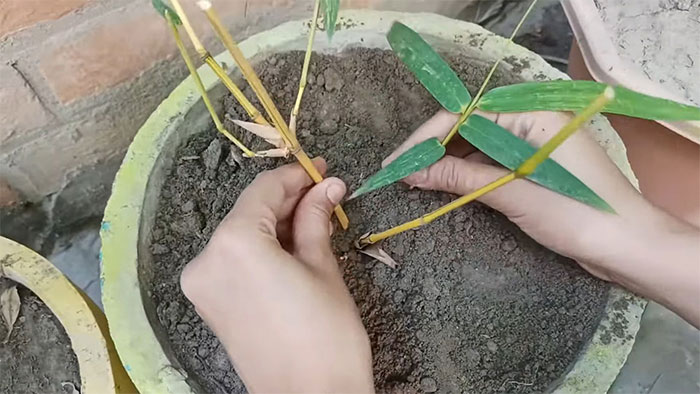
Image credits:Nature’s Groover.
Found the bamboo for you? Well, now comes the fun part. The part where your hands get dirty. However, bamboo isn’t as easy to grow as it seems. If you want to save time and money (and stress in the future), it’s not enough to just stick some seeds in the ground. You should have a checklist to help you keep things organized.
Where to Plant Bamboo?
You should consider the amount of light the place gets and how damp it is. For the best result, stick to an area with at least six hours of sunlight. While more would be better, six hours daily are enough for bamboo. Also, make sure the place isn’t too damp. Bamboo doesn’t grow well in waterlogged, swampy conditions.
When to Plant Bamboo?
Bamboo grows best when it’s hot outside. So, if you plan to plant your bamboo outside, ensure it’s warm first. Spring and summer seasons can provide that much-needed warmth for your plant. However, this part is easier if you’re growing it indoors. Keep your house relatively warm and let in some fresh air occasionally.
How to Plant Bamboo?
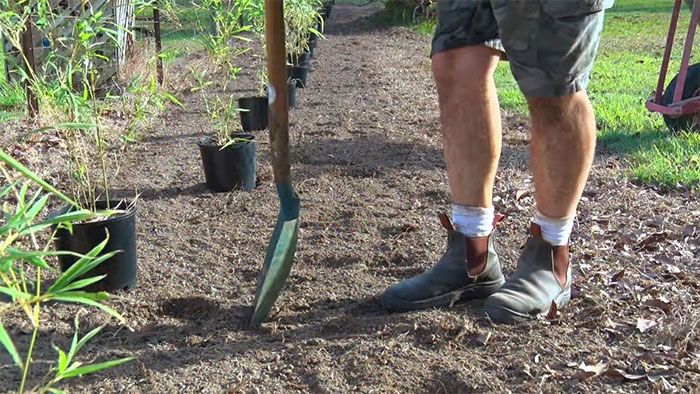
Image credits:Adam Woodhams.
Now comes the step where you should whip out your gardening gloves. To save you time, we have compiled a few simple steps to follow. If you follow them, you can expect your soon-to-bebamboo gardento flourish. However, remember that running and clumping bamboo have different planting steps. Here’s how to plant a running bamboo:
Step 2.Select a location that could keep your bamboo from going “wild.” You may want to use physical barriers to contain its growth.
Step 3. Dig out holes and place yourbamboo plantin them. We suggest deepening the holes so that the rootball would be slightly lower in the ground than in the container from which it came.
Step 4. To contain the bamboo more effectively, dig out 40 to 60-centimeter trench-like holes around it and line them up with sturdy barriers like plastic rhizome barriers specifically designed for bamboo.
Step 5. Fill in the space around the bamboo with the soil mixture from step 1. You can damp the area with water, but be mindful not to overwater.
When it comes to clumping bamboo, the process is slightly easier.
Step 2. Dig a hole twice the size of the rootball itself.
Step 3. Place the bamboo with its rootball into the hole. Ensure its rootball sits at the same level as the ground surface.
Step 4. Fill the space with soil, manure, and compost, and water the area.
Bamboo Plant Care
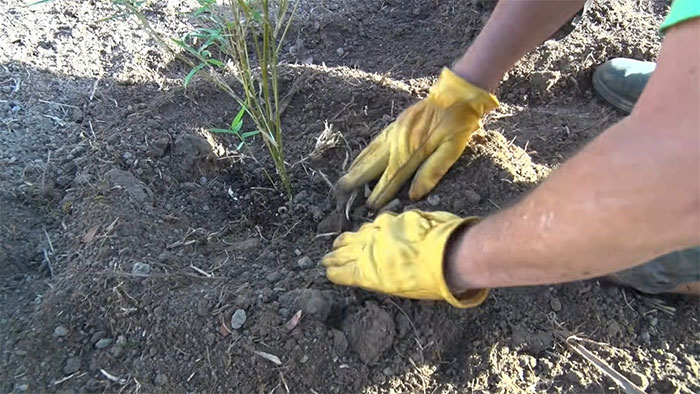
Now comes the somewhat easier part — bamboo plant care. If you want your bamboo plant to flourish, you’ll need to take care of it occasionally. Luckily, since most bamboo species are known for their low maintenance, you won’t need to put a lot of work into this step. To make it easier, we’ve compiled a checklist of things to consider to grow a healthy and beautiful plant.
Light
You can’t beat natural sunlight. To grow well, bamboo plants require six hours of daily sunlight. However, they can survive with less. If you grow your plant indoors, take it outside during the warmer seasons.
Soil
Bamboo does well in soil that’s moist and well-drained. However, it’s flexible with other soil types as long as they’re not too wet or dry. Usually, acidity isn’t a major concern. However, some types of bamboo prefer a more acidic soil. Also, keep some of the fallen leaves under the plant unraked. They protect the bamboo’s surrounding soil, roots, and rhizomes and provide some additional nutrients.
Water
For most bamboo plants, you need to water them twice a week. Most watering should happen between the spring and autumn seasons when the heat intensifies. However, don’t overwater the soil since that can lead to root rot.
Temperature and Humidity
The balance of the two is important for the longevity of the bamboo. As mentioned, keeping the plant in a warm climate with high humidity is best. However, if it’s cold outside, fear not. Your bamboo plant should be fine as long as the temperature stays between 65 and 90 degrees Fahrenheit (18 to 32 degrees Celsius).
Fertilizer
Bamboo loves to eat. We suggest fertilizing a bamboo plant three times during the growing season (spring and autumn). It is best to do so with a nitrogen-rich grass fertilizer. You might also want to get a fertilizer that is rich in iron for optimal growth.
Common Pest and Diseases
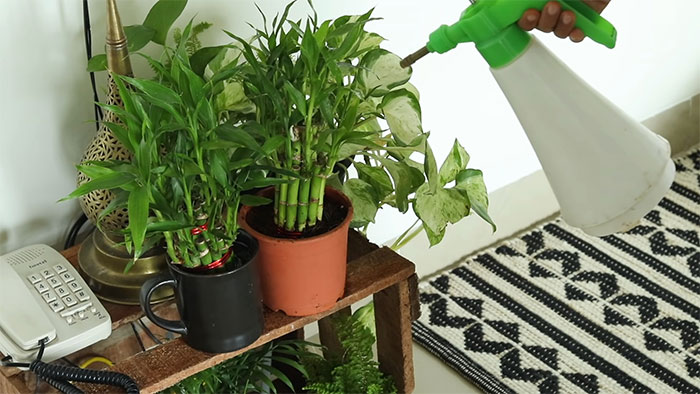
Image credits:Garden Up.
Overwintering
Bamboo is built like a tank. With enough compost or mulch around the base of the plant, it can survive relatively harsh winter conditions. However, if you have bamboo planted in a container, it’s best to move the plant to a warmer place. Also, ensure the leaves aren’t exposed to harsh winter air.
Propagating the Plant
Spring is the season to propagate the bamboo. You can propagate the plant in two ways: division and rhizome cutting.
Division method. Carefully dig up the bamboo clumps that you want to divide. To cut up the larger clumps of bamboo, use an axe. For smaller ones, a saw should do it. Then, pop the cut pieces in water for a few weeks until you see roots sprouting. It is best to use this method in the middle of spring.
Rhizome cutting. You should use this method in the earlier months of spring. Select the youngest cane around the clump. Gently dig around the selected cane to expose the rhizome. Once the rhizome is exposed, cut it off from the parent clump. Make the rhizome shorter, leaving it about 1 foot (30cm) in length. Place the cane vertically into the ground as deep as you can. Then, watch it establish itself and grow roots.
Pruning
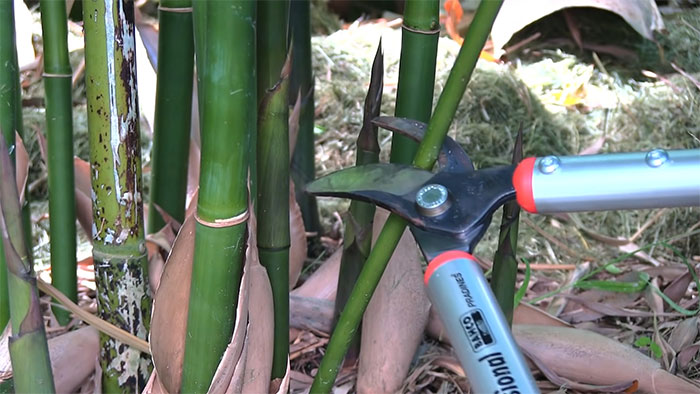
Your bamboo has to look good if you plan to incorporate it into yourspring decor design. Pruning is just enough to make your plant stand out in the design. Cut off the lower foliage, remove dead leaves and canes, and cut some clumps to let in more air and light. Also, trim some of the tops if your bamboo grows too tall.
Potting and Repotting
Bamboo is a fast-growing plant, so it’s a good idea to include “repot my bamboo” in your schedule. The process itself is straightforward. Here’s what you need to do:
Step 1. Prepare your workspace. The cleaner, the better, to avoid all the nasty pests and diseases. Also, water the plant one day before repotting.
Step 2. Carefully remove the plant from the pot, ensuring you don’t damage the roots. You can loosen up the roots with a stick.
Step 3. Place the roots into a new container. Fill up the pot with quality soil that drains the water quickly. Spread the roots in the pot as loose as you can. Compact the soil slightly, not too much.
Common Problems
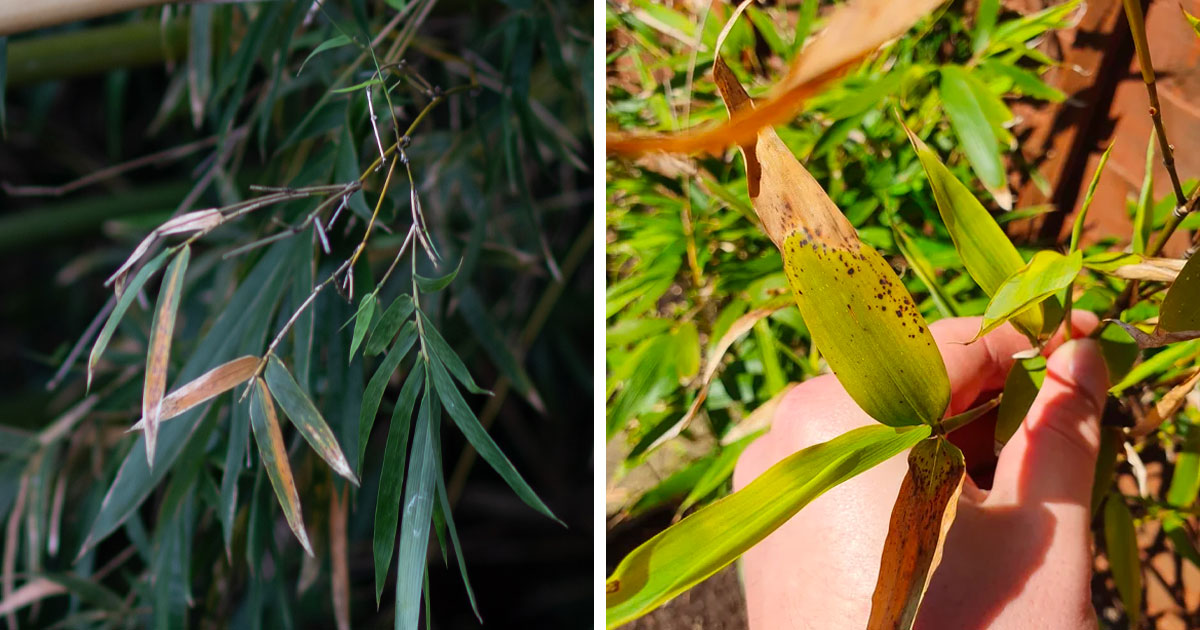
Image credits:Kool Canddirkdiggler_1.
For every problem, there’s a solution. While you might know the pests and diseases, you shouldn’t ignore other problems. Here are some of them:
Let Your Bamboo Reach the Sky (Not Literally)
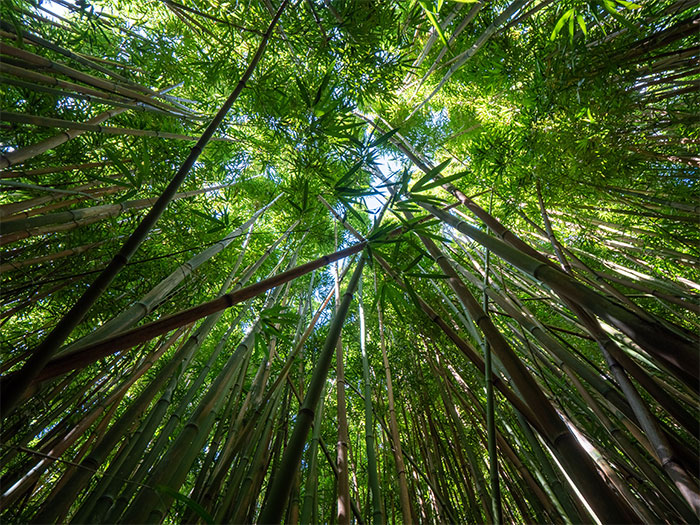
Image credits:James Wheeler.
Convinced you want to grow bamboo? Well, it’s the perfect plant if you are just entering the gardening world. Make abamboo fencein your yard or elevate yourbedroom decor. Either way, we believe the plant will look great anywhere you put it. And, if you follow this guide, you will have a healthy plant, too.
FAQ
How Fast Does Bamboo Grow?
Bamboo grows fast and is often considered the fastest-growing plant on Earth. In fact, according toGuinness World Records, some bamboo species can grow at an astonishing rate of up to 2.91 feet per day, which is equivalent to 1.5 inches per hour. It’s a perfect plant if you want to see quick progress.
Does Bamboo Clean the Air?
Bamboo, like any plant, cleans the air. It can reduce carbon dioxide, absorb the sewage water, and even remove heavy metals.
What is the Downside of Bamboo Plants?
With the fast growth comes the fact that bamboo spreads like wildfire (not literally). Bamboo can spread across your yard and even into your neighbors if not contained. Then, you’ll have some problems within the neighborhood.You May LikePeople Are Sharing Their Decked-Out Bedrooms, And Here Are 30 Of The Most Amazing OnesŽydrūnė TrukanavičiūtėUltimate Guide to Growing and Caring For Ajuga PlantAivaras KaziukonisA Beginner’s Guide To Growing And Caring For BougainvilleasDamanjeet Sethi
Žydrūnė Trukanavičiūtė
Aivaras Kaziukonis
Damanjeet Sethi
Home & Design